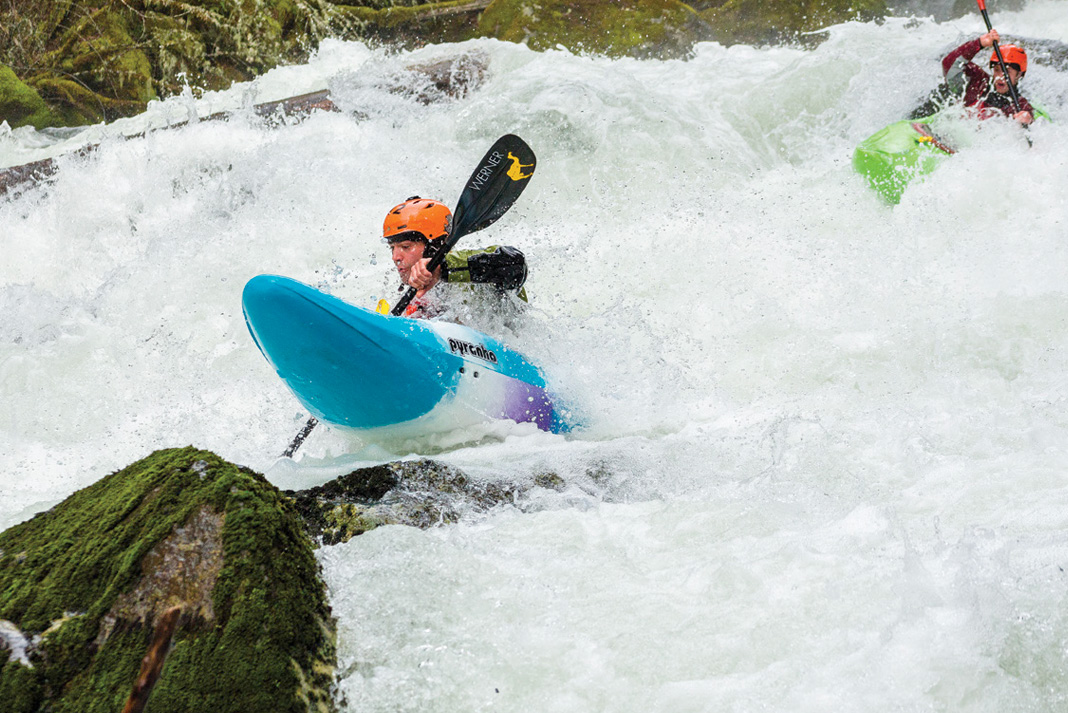I don’t try clothes on before I buy them. If the waist and length measurements of a pair of jeans is in the ballpark with what I usually wear, I assume things will be fine. While sometimes this strategy works out, it’s also left me with catastrophic seam failure. Much to my wife’s annoyance, I don’t really care about clothes. When it comes to sizing a kayak however, I pay attention. Ensuring a paddler falls inside the manufacturer’s weight recommendations simply isn’t enough. After outfitting hundreds of kayak school students and 10 years of testing boats for Rapid, here is what I’ve learned you really need to know.
Weight
When sizing a new kayak, the manufacturer’s optimal paddler weight ranges are a good place to start, but few paddlers will fall right in the middle of this optimal range. I often have to choose between being on the heavy end of a medium size or the light end of a large size. It comes down to this: a smaller boat will be lighter, have less volume and sit lower in the water. For play this means easier vertical moves like cartwheels and squirts and an overall sense of being easy to throw around. The trade-off is that running rapids and sticking wave moves is trickier because more water grabs your boat. In river runners, a larger boat might give you more confidence by keeping you upright but a lower volume boat is sometimes nice—like when trying to get out of a sticky hole. Keep in mind that your weight will fluctuate based on layers, and the gear carried. Test paddle river running and creek boats with water bottles, throw bags, pin and first aid kits, and your lunch. It makes a difference.
Leg Room
At six feet tall with a 30-inch inseam (yes, I have a long back) I know a few things about issues with leg room. Often, I can’t move the seat far enough forward to trim the boat for best performance. Be sure to loosen and fiddle with thigh brace positions. Moving your knees even a little bit up or out can provide additional room at your feet. If you have really long legs the decision is often made for you—you have to opt for a larger size you can fit in.

Width
The width of boats between different sizes usually only changes a tiny bit but it could be a factor in the overall fit of a boat. Generally the larger boats are a bit wider, which means you might not reach the water as well or keep that nice vertical paddle shaft when pulling forward strokes. A wider boat will also require a bit more effort to edge. The advantage might be a more stable platform that glides down a green wave better than a narrower twin.
Cockpit Height
This doesn’t seem like such a big deal until you land a nice solid boof that is quickly followed by the pain of your elbow slamming on the cockpit (followed by swearing).While important on playboats too,it’s the creekers and river runners where you want to be especially sure you have lots of room between elbow and deck. If you find the sides of a boat are swallowing you up, try adding foam under your seat to boost you up—although this raises your center of gravity—or try a size down.
Overall Feel
Most modern boats have many options for tweaking the outfitting—hip shims, seats that slide front and back and sliding and rotating thigh braces. With a bit of time you can get any boat to feel pretty good. Something to consider though is your overall position. Do you have room for your feet to sit how you like? Can you bring your knees up in an aggressive position or do you like them straighter out in front? Can the back band go high or low enough for you? Some boats only need a little tweaking to feel just right, while others never seem to be a part of you regardless of how much fiddling you do.Test paddle your new kayak with care before you buy.
Dan Caldwell is a regular contributor to Rapid magazine. After one too many photo shoots during -25°C for spring release kayaks, he now mostly avoids our calls between December and March.



